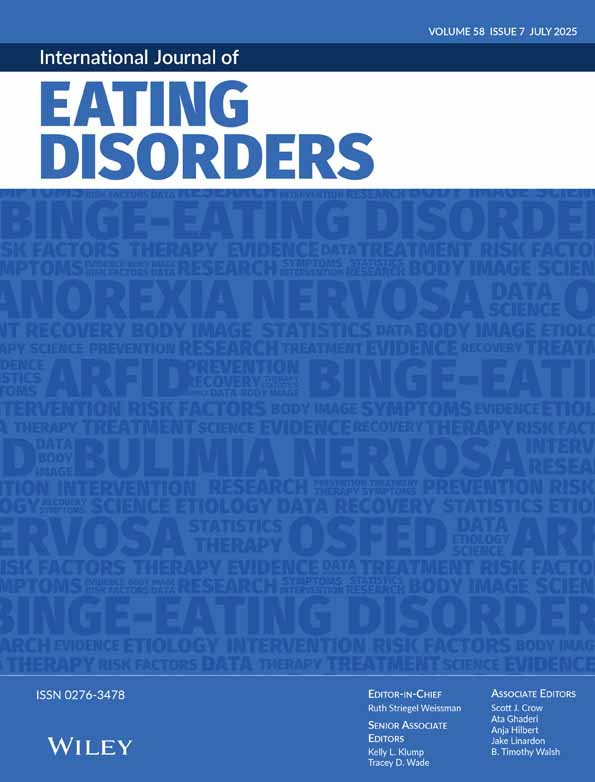Predictors of outcome for two treatments for bulimia nervosa: Short and long term
Abstract
Objective
This study examined pretreatment variables to predict outcome in two treatments for bulimia nervosa. Method: Patients were offered either 16 weeks of cognitive-behavioral therapy (CBT) or a self-treatment manual followed by up to 8 weeks of CBT (sequential group). Using complete data, stepwise regression analyses were performed. Results: It was found the a longer duration of illness and lower binge frequency predicted a better outcome both at the end of treatment (p < .001) and at 18 months of follow-up (p < .005). In the sequential group, lower pretreatment binge frequency predicted better outcome at the end of treatment (p < .05) and at 18 months of follow-up (p < .05). In the CBT group, longer duration of illness predicted better outcome at the end of treatment (p < .02). Discussion: It is concluded that (1) those with more frequent binging may require a more intense intervention and (2) those who have been ill longer may be more motivated to respond to treatment. © 1997 by John Wiley & Sons, Inc.




